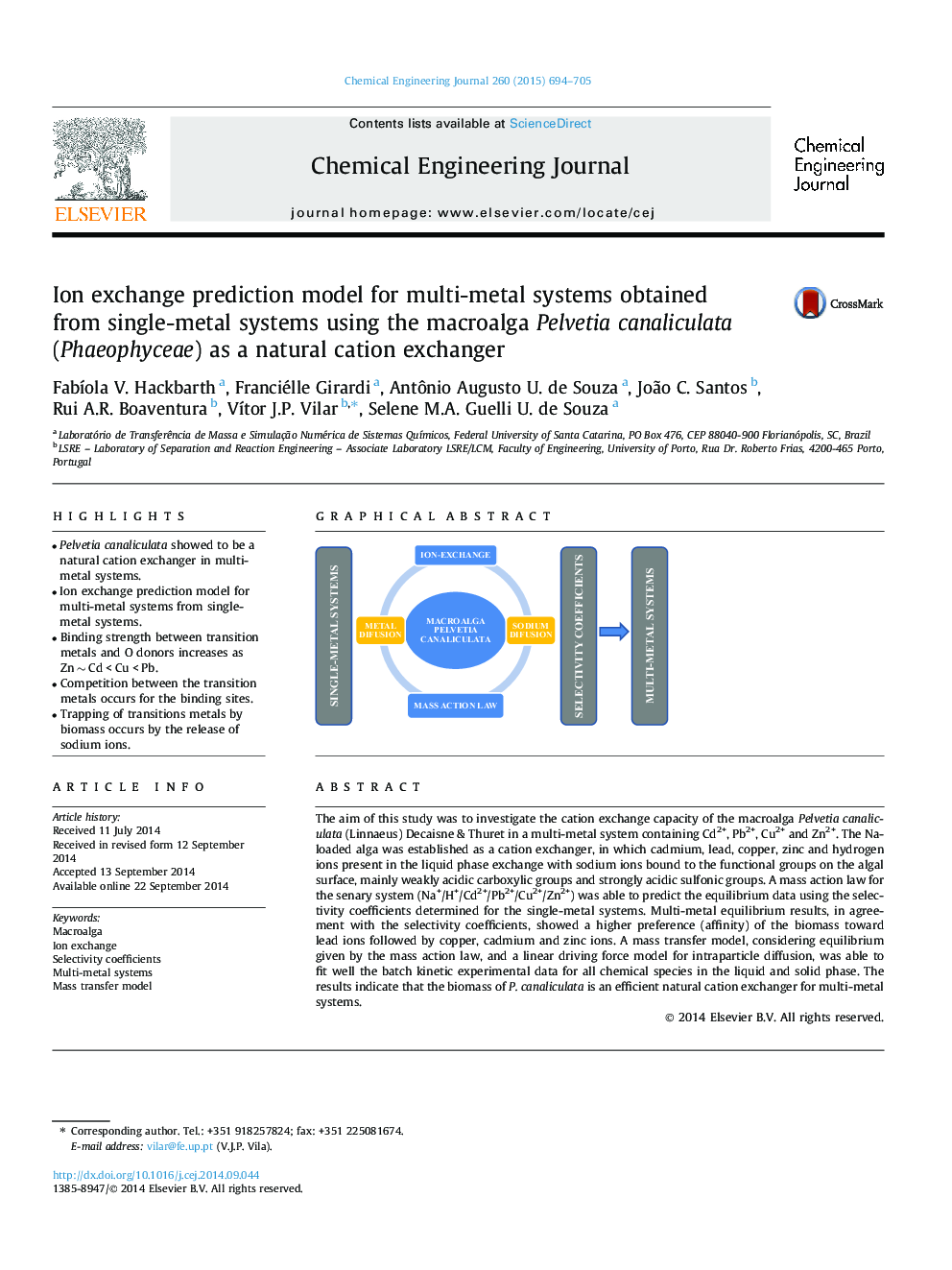| Article ID | Journal | Published Year | Pages | File Type |
|---|---|---|---|---|
| 146775 | Chemical Engineering Journal | 2015 | 12 Pages |
•Pelvetia canaliculata showed to be a natural cation exchanger in multi-metal systems.•Ion exchange prediction model for multi-metal systems from single-metal systems.•Binding strength between transition metals and O donors increases as Zn ∼ Cd < Cu < Pb.•Competition between the transition metals occurs for the binding sites.•Trapping of transitions metals by biomass occurs by the release of sodium ions.
The aim of this study was to investigate the cation exchange capacity of the macroalga Pelvetia canaliculata (Linnaeus) Decaisne & Thuret in a multi-metal system containing Cd2+, Pb2+, Cu2+ and Zn2+. The Na-loaded alga was established as a cation exchanger, in which cadmium, lead, copper, zinc and hydrogen ions present in the liquid phase exchange with sodium ions bound to the functional groups on the algal surface, mainly weakly acidic carboxylic groups and strongly acidic sulfonic groups. A mass action law for the senary system (Na+/H+/Cd2+/Pb2+/Cu2+/Zn2+) was able to predict the equilibrium data using the selectivity coefficients determined for the single-metal systems. Multi-metal equilibrium results, in agreement with the selectivity coefficients, showed a higher preference (affinity) of the biomass toward lead ions followed by copper, cadmium and zinc ions. A mass transfer model, considering equilibrium given by the mass action law, and a linear driving force model for intraparticle diffusion, was able to fit well the batch kinetic experimental data for all chemical species in the liquid and solid phase. The results indicate that the biomass of P. canaliculata is an efficient natural cation exchanger for multi-metal systems.
Graphical abstractFigure optionsDownload full-size imageDownload as PowerPoint slide
